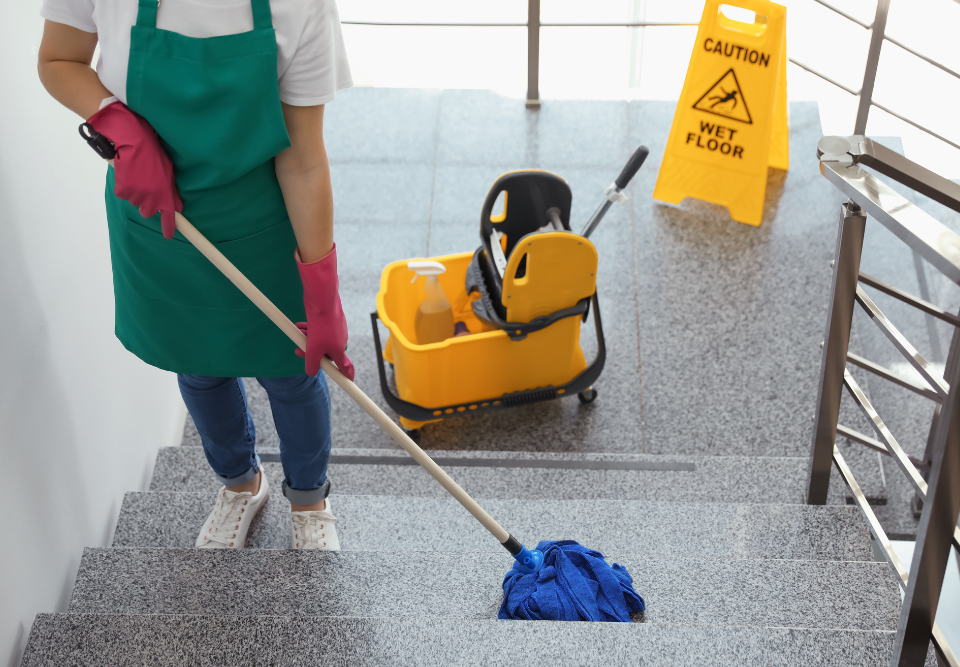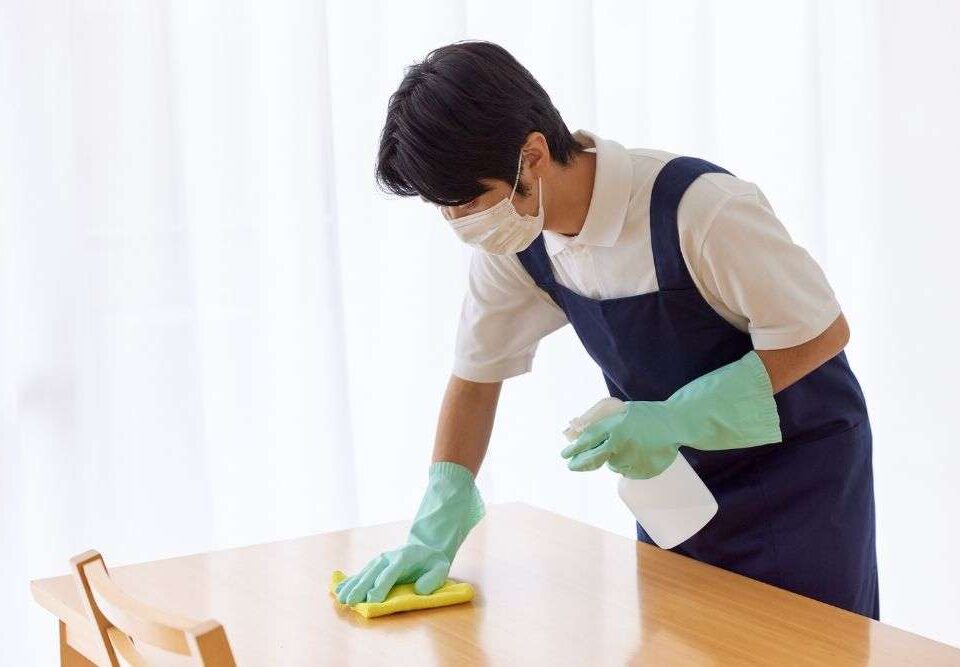
Benefits of Professional Construction Debris Removal
August 19, 2025
The Role of Junk Removal in Streamlining Property Management
August 19, 2025How to Handle Old and Unused Office Equipment
Understanding the Importance of Clearing Out Old Office Equipment
Cluttered office spaces can slow down productivity and create unnecessary stress for employees. Old printers, computers, and office furniture take up space that could be used more efficiently. By recognizing the importance of clearing out unused equipment, businesses can optimize their work environment and improve overall workflow. Efficient removal not only opens up physical space but also allows teams to focus on more critical tasks without distraction. Understanding the types of equipment that accumulate over time and planning for their removal can prevent a buildup that affects both morale and operational efficiency. Companies that make a habit of regularly assessing office equipment are better positioned to maintain an organized, functional workplace.
Additionally, properly managing old office items is an essential step toward sustainability. Many electronic devices and office furnishings can be recycled or repurposed, reducing the environmental footprint of a business. Creating a system for sorting items according to their potential for reuse or disposal ensures that valuable resources are not wasted. Employees involved in this process gain awareness of responsible disposal practices, promoting a culture of environmental consciousness. Ultimately, tackling old office equipment thoughtfully benefits both the company and the community, establishing a standard of efficiency and sustainability.
Evaluating What to Keep and What to Discard
Before disposing of any office equipment, it is crucial to evaluate what is worth keeping and what should be discarded. Items that are outdated or no longer functional should be separated from those that can be reused or donated. This process requires careful consideration to avoid prematurely discarding useful tools. Consulting with staff can help identify equipment that may have hidden value or can be repurposed in other departments. Documenting and categorizing items ensures a smoother removal process and reduces confusion about what is to be retained. Establishing a clear evaluation strategy also aids in budgeting for new equipment, preventing unnecessary purchases and optimizing resource allocation.
Once a list of items for disposal is prepared, businesses can plan their next steps strategically. Prioritizing the removal of bulky or hazardous items, such as old electronics, ensures safety and compliance with disposal regulations. For items that can be donated, connecting with local charities or non-profit organizations provides an opportunity to support the community while decluttering the workspace. Items slated for recycling should be taken to certified facilities to ensure proper handling and reduce environmental impact. By evaluating office equipment carefully, businesses maintain a balance between operational efficiency, cost management, and environmental responsibility, creating a streamlined and organized workspace.

Creating a Schedule for Office Equipment Removal
Implementing a schedule for office equipment removal helps maintain a consistently organized environment. Regularly scheduled cleanouts prevent the accumulation of unused items and make the removal process more manageable. By setting clear intervals for reviewing and discarding old equipment, businesses reduce the stress associated with sudden purges. Employees are less likely to feel overwhelmed, and office spaces remain functional and uncluttered. Scheduled removal also allows for better planning in terms of logistics, staffing, and budget allocation, ensuring that the process is smooth and efficient.
A consistent removal schedule also encourages proactive maintenance of office assets. Knowing that old or obsolete equipment will be removed at specific times prompts employees to report malfunctioning items promptly. This practice extends the life of remaining equipment and reduces downtime caused by outdated or broken tools. Moreover, it fosters accountability within teams, as everyone understands their role in maintaining a tidy and efficient workspace. By adhering to a well-defined schedule, companies can create a dynamic and organized office environment that supports productivity, safety, and employee satisfaction.
Safe Handling and Transportation of Office Equipment
Proper handling and transportation of old office equipment are critical to avoid injuries and damage. Many items, including computers, copiers, and filing cabinets, can be heavy or awkward to move. Using appropriate lifting techniques and equipment such as carts or dollies minimizes the risk of strain or accidents. Training employees on safe handling procedures ensures that all movements are executed with care. Additionally, protective packaging can prevent damage to items during transport, whether they are being moved for recycling, donation, or disposal. Prioritizing safety reduces workplace hazards and promotes a responsible approach to office management.
Transportation strategies should also consider the environmental and logistical impact of moving equipment. Grouping items according to type or destination makes the process more efficient and reduces the number of trips required. Choosing eco-friendly transportation methods, such as electric vehicles or consolidating shipments, minimizes the carbon footprint associated with office cleanouts. Proper documentation and tracking of items during transit ensure accountability and prevent loss. By integrating safety and efficiency into the handling and transportation process, businesses safeguard both their employees and the equipment, contributing to a seamless and responsible removal system.
Leveraging Professional Junk Removal Services
Engaging professional junk removal services can simplify the process of handling old office equipment. These services bring expertise, manpower, and specialized equipment to safely and efficiently remove items that may be challenging to dispose of independently. Professionals can handle large-scale cleanouts and ensure compliance with disposal regulations, which reduces liability for the business. By outsourcing this task, employees can focus on their core responsibilities while the removal process is managed effectively. The experience of junk removal companies also helps in identifying items that can be recycled, repurposed, or donated, maximizing value from discarded equipment.
Professional services offer flexible solutions tailored to the unique needs of each office. Whether a business requires a one-time purge or recurring maintenance cleanouts, providers can adjust their approach to fit schedules and budgets. Their knowledge of local regulations ensures that sensitive electronic equipment and other potentially hazardous items are disposed of responsibly. In addition, professional teams often provide documentation or certificates of recycling, which can support sustainability reporting or compliance audits. Utilizing experts in junk removal streamlines operations, ensures safety, and aligns the office with responsible disposal practices.
Recycling and Eco-Friendly Disposal Options
Recycling and eco-friendly disposal options are vital considerations when removing old office equipment. Electronics, plastics, and metal components contain materials that can be reused in manufacturing, reducing the need for raw resources. Identifying local recycling centers and certified e-waste facilities ensures that items are processed correctly and sustainably. Separating materials according to recycling requirements improves efficiency and guarantees that resources are reclaimed appropriately. Prioritizing eco-friendly disposal supports environmental initiatives and enhances the company’s reputation as a socially responsible entity.
Incorporating recycling strategies into regular office cleanouts also fosters a culture of sustainability among employees. Awareness of how different materials are handled and reused encourages mindful consumption and careful management of new equipment. Businesses can implement policies that reward environmentally conscious practices, further promoting a green mindset. Ultimately, choosing recycling and eco-friendly disposal options minimizes landfill waste, reduces environmental impact, and aligns office operations with broader sustainability goals, making the workplace more responsible and forward-thinking.
Donating Usable Office Items
Donating usable office items can benefit local organizations and reduce waste. Items such as desks, chairs, and computers that are still in working condition may find a second life with schools, nonprofits, or community centers. Identifying potential recipients and coordinating logistics for donation ensures that the process is smooth and impactful. This approach not only helps the community but also provides businesses with tax benefits in some cases. Donation programs create a sense of purpose and value for items that might otherwise end up in landfills.
Organizing donations also enhances employee engagement. Staff members can participate in identifying items for donation, packing them safely, and coordinating delivery. This involvement fosters teamwork and instills a sense of responsibility toward the community. Furthermore, businesses that actively donate surplus equipment strengthen their local networks and partnerships. By systematically donating usable items, offices contribute positively to society while maintaining an organized and functional work environment, ensuring that resources are allocated where they are needed most.
Securing Sensitive Data During Disposal
Protecting sensitive data is crucial when disposing of old office electronics. Hard drives, computers, and other storage devices may contain confidential information that must not fall into the wrong hands. Businesses should implement protocols for securely erasing data before disposal. Using professional data destruction services or certified software ensures that all information is completely removed. This practice prevents potential data breaches and protects both the company and its clients. Establishing clear data security policies also demonstrates diligence and responsibility to stakeholders.
In addition to digital security, physical storage devices should be handled carefully to prevent accidental data leaks. Items containing sensitive information should be transported separately and locked if necessary until they are processed. Maintaining a log of destroyed devices and documenting the method of data removal provides an audit trail for compliance purposes. By prioritizing data security in disposal processes, businesses safeguard their information assets and reinforce trust with employees and customers, while efficiently managing the retirement of old office equipment.
Planning for Future Equipment Management
Effective handling of old office equipment involves planning for the future. Establishing policies for the lifecycle of office tools helps manage acquisitions, maintenance, and eventual disposal. Clear guidelines for when and how equipment should be replaced prevent unnecessary accumulation and ensure that only functional and relevant items occupy workspace. Proactive planning reduces emergency removal situations and supports sustainable office practices. Organizations that anticipate equipment needs and retirement schedules streamline operations and maintain orderly environments.
Integrating future management plans with procurement and budgeting processes further enhances efficiency. Tracking the usage and condition of equipment allows for timely upgrades and prevents unexpected shortages. Communicating these policies to staff ensures everyone understands procedures and contributes to maintaining an organized office. Forward-looking strategies also support sustainability goals by encouraging recycling, donation, and responsible disposal practices. Overall, planning for future equipment management balances operational needs with environmental responsibility, fostering a sustainable and productive office culture.
Engaging Employees in the Disposal Process
Involving employees in the disposal process creates a sense of ownership and accountability. Encouraging staff to identify items that are no longer needed and participate in removal initiatives increases awareness of office organization. Collaborative cleanouts foster team spirit and shared responsibility for maintaining a functional workspace. Employees gain insight into the importance of proper disposal practices and the value of keeping the office environment efficient. Their engagement ensures that decluttering efforts are more comprehensive and effective.
Active employee participation also improves compliance with company policies regarding equipment disposal. Staff who understand protocols for recycling, donation, or secure destruction of data are more likely to adhere to guidelines consistently. Involving employees in the process can also spark ideas for optimizing office layouts, equipment usage, and sustainability initiatives. Ultimately, engaging the workforce in equipment disposal not only enhances operational efficiency but also cultivates a culture of responsibility and mindfulness, ensuring that the office remains organized and forward-looking.
Conclusion
Handling old and unused office equipment requires a thoughtful and organized approach that balances efficiency, safety, and sustainability. Businesses that evaluate what to keep, schedule regular cleanouts, and use professional services create a workspace that supports productivity and environmental responsibility. Engaging employees, securing sensitive data, and exploring recycling or donation options ensures that equipment is managed responsibly from acquisition to disposal. A well-structured plan also reduces risks associated with cluttered workspaces and promotes a positive, organized atmosphere that benefits both staff and operations.
For comprehensive junk removal solutions in Santa Rosa, CA, North Bay Junk Removal offers professional services tailored to the unique needs of businesses and residents. Their team handles all types of office equipment with care and efficiency, ensuring that items are properly disposed of, recycled, or donated according to best practices. By contacting North Bay Junk Removal at 707-478-6817, businesses can simplify the process, maintain organized spaces, and uphold sustainable disposal practices while ensuring safety and reliability in every removal.




